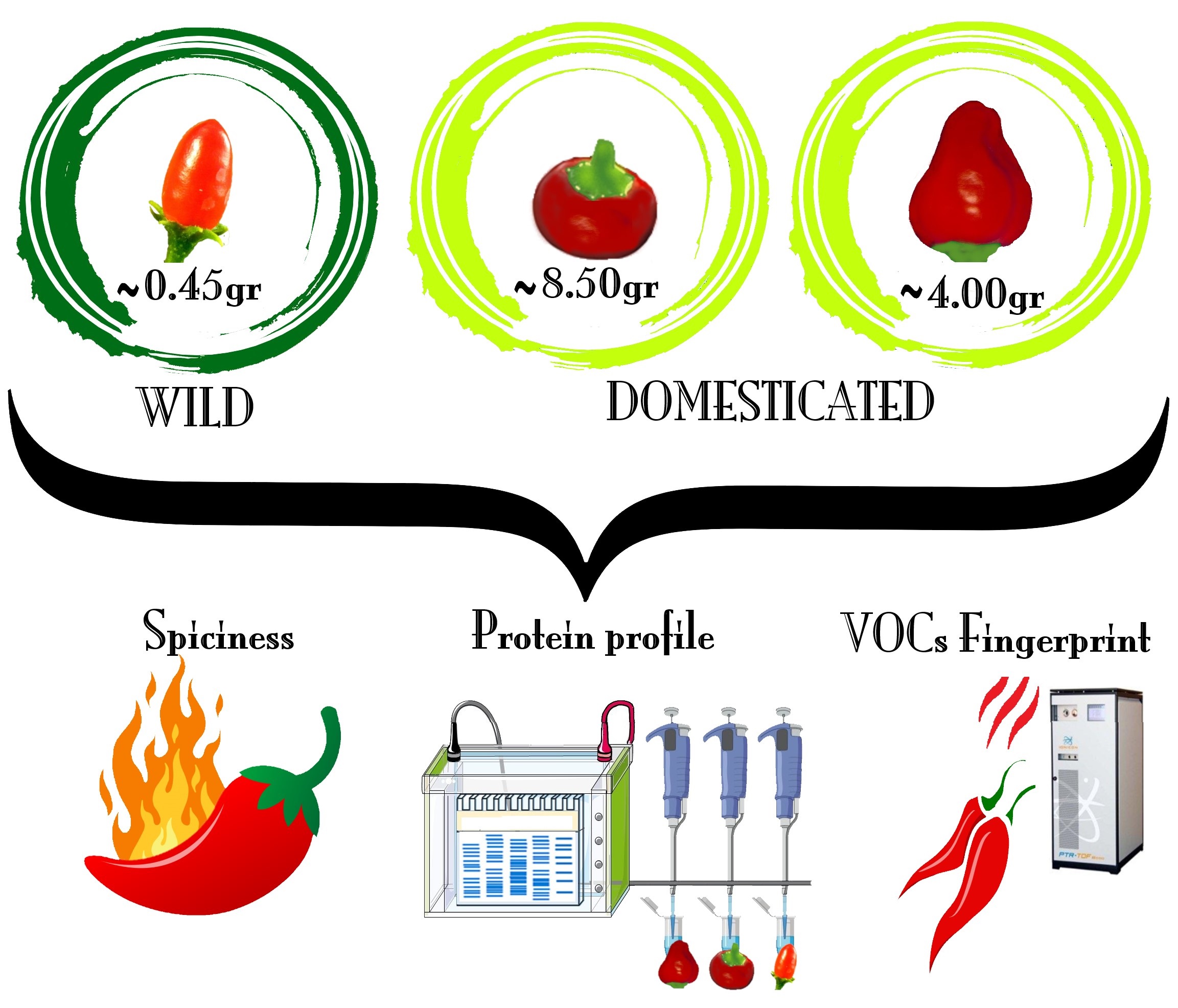Comparison of wild and domesticated hot peppers fruit: volatile emissions, pungency and protein profiles

Published 2021-08-03
Keywords
- Artificial Neural Network,
- Capsicum spp. classification,
- capsaicin,
- SDS-PAGE,
- VOCs
How to Cite
Copyright (c) 2021 Cosimo Taiti; Diego Comparini; Matteo Lanza, Federico Vita, Camilla Pandolfi, Simone Luti, Luigia Pazzagli, Stefano Mancuso

This work is licensed under a Creative Commons Attribution 4.0 International License.
Abstract
Capsicum plant species are globally cultivated in warm and temperate regions, being important for agro-economic, biological and cultural aspects. While their worldwide spread and their ability of cross-pollination to easily hybridize play an important role in the formation of numerous species and varieties but also create confusion for their classification. For this reason, the categorization of species and varieties is complex and several methods have been used to evaluate pepper plant origin and evolution. Therefore, the objectives of this study were to compare a wild pepper (Capsicum chacoense) with other two domesticated cultivars belonging to different species such as Capsicum annuum and C. baccatum and draw conclusions about their origins using different approaches. For this purpose three methodologies have been used and compared: the comparison of their fruits volatile organic compounds (VOCs) emissions , their capsaicin and dihydrocapsaicin content and the leaves proteomic profiles. The VOCs analysis has been conducted by a time-of-flight mass spectrometry (ToF-MS) with an innovative approach to better identify all the compounds detected, in particular using two different ionization agents (H3O+ and NO+) to better identify all the compounds detected. The VOCs and pungency analyses were then used to build back propagation neural networks (BPNN) and a Random Tree classifier to conduct a multivariate analysis and evaluate the most species-specific volatiles. The outcomes appeared to be a most accurate approach with respect to the traditional varieties descriptors used for peppers discrimination. The BPNN led to the identification of several putative volatiles as good candidates for the recognition of these species or significant nodes in a decision learning tool. Finally, protein profiles have been obtained by SDS-PAGE analysis on the leaves to perform a fast proteomic comparison among the species. The protein profiles showed the C. baccatum and C. chacoense were more similar to the domesticated pepper C. annuum.




